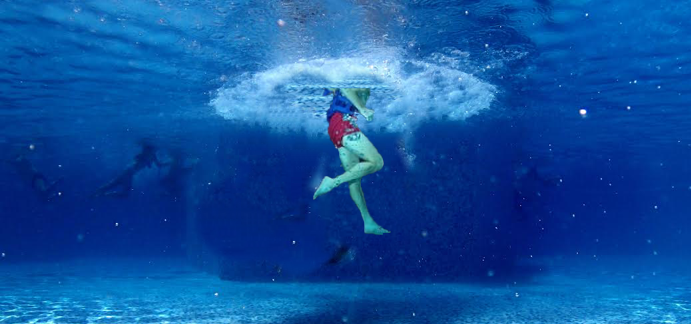Aqua jogging, also known as Deep Water Running is a super winter and injury alternative for runners. One thing to consider is coordination with running workouts.
Ambitious runners would prefer to simply run and not worry much about accompanying alternative and strengthening forms – if only there were not always problems with the musculoskeletal system. One possible solution for cold winter days: running in water.
Valuable coordination training
Deep water running, as running in water is called, allows you to practice numerous technical elements and also improves your stamina. In this way, you can train specifically for running and at the same time protect your musculoskeletal system.
Basically, you can do little wrong in the water. If you want to benefit from running technique, you should hone your running technique in the water or perform the movement technically clean as on land, which is not so easy.
What you need is a special harness or, even better, a vest with buoyancy bodies, which ensures that you stand upright in the water and can concentrate on the technical elements. Equipped like this, you can either focus on the knee stroke (with your foot bent in front), the rear leg extension (with your foot extended), an upright torso and high body center of gravity, or arm movement, all things that count in running on land as well. Or run through the water in a walking or skipping stride.
Pulse lower than on land
In the water, the pulse is lower than on land due to the water pressure, but you can still get a good workout if you run the individual strides vigorously and at a high frequency. Even intervals can be run without any problems.
In addition, countless gymnastic exercises can be performed in the water with the vest, which on the one hand is much easier due to the absence of gravity, but on the other hand can be strenuous due to the water resistance. Runners should give special preference to rotational exercises for the torso and legs – something that is neglected in running.
Timing is important for regular runners
Anyone who runs 4-6 times a week may want to move a workout to the water, even if he or she is not currently experiencing any discomfort. But even for the less ambitious, running in the water is a valuable training enhancement.
At the same time, for avid runners on land or even in the water, keep in mind: Water training is the perfect supplement, but not a full replacement. Since the lack of impact with the ground eliminates eccentric muscle loading, water training does not replace running-specific loading on the active and passive musculoskeletal system. And also the concentric muscle load against gravity is missing (due to the water buoyancy) as well as the usual running step frequencies of 180 and more steps per minute.
From a health point of view, these are not disadvantages at all, on the contrary, the advantages outweigh the disadvantages, but from a running point of view, if you train frequently in water, you lose the necessary dynamics for fast running.
This is especially true for athletes with competitive ambitions. They should therefore intensify their water training at the right time (winter, spring) and be aware that after a longer training phase in the water in spring, it takes about four weeks of patience to get the musculoskeletal system used to fast units again.
This Blog Article was made available to us by Fit for Life. Fit for Life is the Swiss magazine for fitness, running and endurance sports. Would you like to read such articles regularly? Then Click here.

